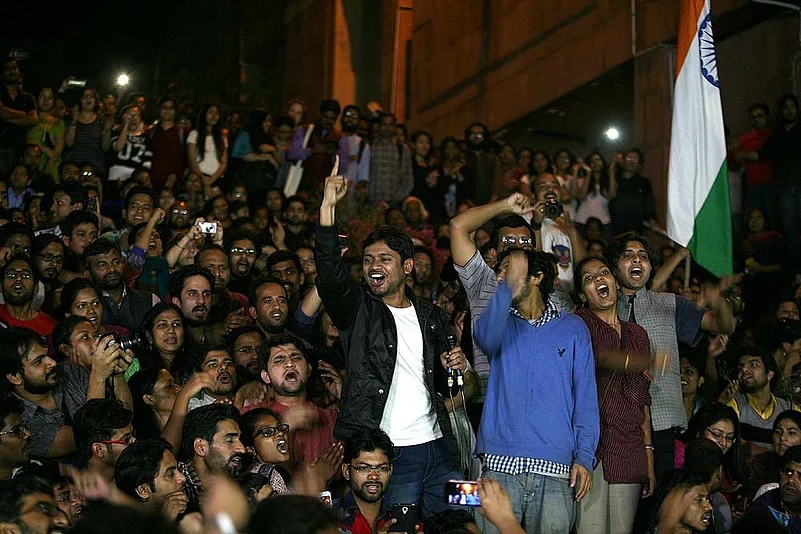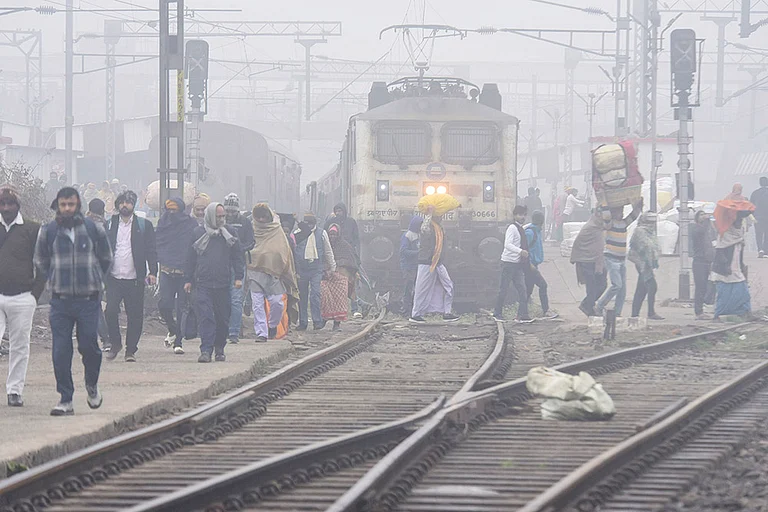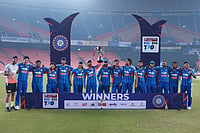Ramachandra Guha’s latest offering, Democrats and Dissenters, switches gears from Page 143, and becomes riveting for the reader. It is from here that the book’s second part begINS—Ideologies and Intellectuals—which comprises thumbnail sketches of social thinkers, Indians and non-Indians alike, who were an INSpiration to Guha or whom he admires for their research, craft of writing, and, often, for defying the intellectual fashion of their times. Their profiles, for most parts, are scintillating; the gem among them being an account of the historian D.D. Kosambi’s father, Dharmanand Kosambi.
For Guha to become stimulating only after 140-odd pages is a letdown, spoilt as we have been by his digging up archives for details of India’s past and stitching these together in insightful narratives. More pertinently, his works are accessible to readers outside academia. Opacity is not his trait. This is primarily the reason why Guha has emerged as one of India’s foremost public intellectuals.
Yet, through the opening section of Democrats and Dissenters, you also sense the perils of being a popular scholar. Such scholars’ magazine and newspaper writings or ectures are perennial temptations for publishers to collect into a hardbound book, under some wide and encompassing theme. It sells well, obviously. No doubt, the writer is complicit in it, and why shouldn’t he be? If not for anything else, previously published essays regurgitated with minor variations in book form impart a degree of permanence to them.
That this is perhaps Guha’s motivation as well pops out in the essay The Brilliance and Dogmatism of Eric Hobsbawm. Guha writes, “The novelist and essayist Arthur Koestler once remarked that he would gladly exchange a hundred readers today for ten readers in ten years’ time, and for one reader in a hundred years’ time. This sentiment most serious writers would endorse.” As far as the opening section goes, Guha seems to have exchanged a hundred readers today for two readers in two years’ time.
This is obvious in the opening essay on the Congress, which analyses the Long Life and Lingering Death of the Indian National Congress, and reaches the conclusion, as so many have, that Rahul Gandhi “cannot lead his party or win elections”. This is partly because of Gandhi’s own deficiencies and partly because “India has moved on”. India is deemed to have moved on because its voters are no longer in thrall to the dynasts, Guha argues.
But really? How are we then to explain the dynasts who lead regional outfits, and whom the same voters regularly elect? Guha accepts that “in state or local elections, dynastic politics may still have some salience”. It doesn’t have ‘some’ but huge salience, and also at the national level. A little over two years ago, Patrick French showed that a large chunk of MPs are still linked to political families. But then, you don’t need Guha to tell you that Gandhi isn’t a brilliant politician, not in a book-form at least.

Dharmanand Kosambi
It is, anyway, flawed to blame Rahul for all the woes of the Congress, which has been plagued by crisis from the time he was in school. Might it not be that it makes little sense for the Congress to mean something to everyone in today’s increasingly polarised society? Is this why the Congress has chosen to brazenly woo Brahmins in Uttar Pradesh? The second question Guha couldn’t have examined, since he seemingly revised these essays/lectures—all but one having been published previously—in 2016, weeks before the Congress revealed its revival strategy for Uttar Pradesh.
However, by then, much of the controversy regarding the slapping of sedition charges on student leaders at Delhi’s JNU had already played out. Yet Guha, inexplicably, does not include the JNU incident in the essay, Eight Threats to Freedom of Expression In India, which consequently reads a bit dated. The rise of in-your-face nationalism has become a menacing threat to freedom of expression. Guha’s list of eight threats—existence of archaic laws and identity politics, for instance—can be said, at a stretch, to allude to the dangers that muscular nationalism poses to the right to free speech. But it is a category on its own, a tricky one at that.
The essay Democracy and Violence is notable for Guha’s observation that “one can plausibly argue” that certain forms of secessionist violence “are in some situations necessary and perhaps even legitimate”. He identifies two such forms in Kashmir’s context—attacks on the property of the state and on officials or soldiers of that state. Guha goes on to criticise the secessionists, apart from other reasons, for dubbing reformist politicians ‘collaborators’ and then killing them.
But the edge that Democracy and Violence gives to Guha’s book is blunted because a few pages later you read Which was our Worst Year Ever?, first written in a two-part series for this magazine. It would be interesting for those who are clueless about India’s past 69 years. What is fetching for a magazine seems such a travesty in a book. Even Guha’s flair can’t blur the different expectations with which we approach a magazine, an academic journal, and a book.
The book’s second section is quintessentially Guha—profound and mostly unputdownable, and is a book in itself. The two sections are as mismatched as a pink shirt worn over green trousers. In the publishing industry, perhaps 156 pages make not for a non-fiction.
The profile of Benedict Anderson, author of the seminal Imagined Communities, is leavened by e-mail exchanges between him and Guha. And sociologist Andre Beteille is hailed as the “wisest man in India”, who predicted way back in the 1960s that Other Backward Classes would succeed in winning reservations, which will never, ever be withdrawn.
Guha’s account of Dharmanand Kosambi (The Life and Death of a Gandhian Buddhist) is breathtaking. Kosambi studied Sanskrit, travelled to Sri Lanka and Burma and learnt Pali from scholars of the Buddhist canon. He was invited to the US to edit Pali texts. He then returned to India to participate in the salt Satyagraha, was arrested, forged a friendship with Mahatma Gandhi, and, ultimately, starved himself to death. It is truly a moving account. It is also not incidental that this is the only essay Guha specially wrote for Democrats.
An unmistakable aspect of this section is that Guha unabashedly celebrates a few men and a woman (Dharma Kumar) for their defiance of Marxist contemporaries, who are portrayed as incorrigible demons of the intellectual world. They are accused of identifying, among other things, “with a single country—but this not India. Once it was Russia, then China, still later Cuba or Vietnam, and most recently, Venezuela”. In parenthesis is delivered yet another lexical blow—“The death of Hugo Chavez may prompt a search for a fresh Fatherland”.
As a swipe, it tickles. As a statement, it is sweeping. It opens Guha to the same charge that he flings against Nobel laureate Amartya Sen. Guha critiques Sen’s The Argumentative Indian for using history in much the way Hindutva ideologues do, albeit the two reaching opposite conclusions. In the same vein, his scorn for Marxists resembles the Hindutva ideologues—they both believe Indian Marxists are scum.
This is a quibble in comparison to the disappointment of having to contend that Democrats and Dissenters could be Guha’s idea of a book, more so as I have always worn as a badge of honour the glowing acknowledgement he gave me in his magisterial A Corner Of a Foreign Field and the few times he has tweeted my pieces.
The Word
Koshy’s Parade Cafe, with signature dishes like its mutton cutlets, is a favoured destination of Bangaloreans. It is also one of the dedicatees in Guha’s book.


























